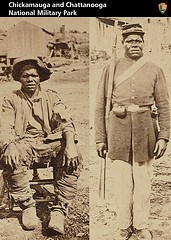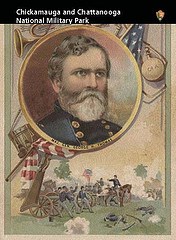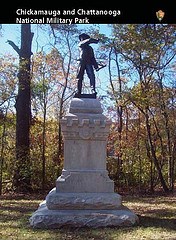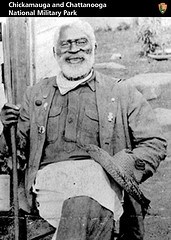|
Kids! Collect stories about the Civil War and civil rights! The National Park Service is offering more than 500 trading cards to mark the 150th anniversary of the Civil War. Visit a park in person to earn a card (sorry, cards cannot be mailed). Ask a ranger or stop by the visitor center at a participating park. You can view all the cards online and discover stories from nearly 90 national parks in 31 states and the District of Columbia. You'll be surprised at what you will learn. 
Hubbard Pryor In 1864, a young slave ran away from a Georgia plantation, making his way to Union occupied Chattanooga, Tennessee. Hubbard Pryor entered the city in ragged clothes, yet was determined to fight for the freedom of those remaining in bondage. He was one of the first African Americans to enlist in the 44th US Colored Infantry. 
Lt. Albion Tourgee Civil War soldiers served for many different reasons. Some Union soldiers fought primarily to preserve the Union. Lieutenant Tourgee, however, fought to end slavery. He served in the 105th Ohio Infantry, which fought at the Battle of Chickamauga. During the Reconstruction period after the war, Tourgee became a crusader for equal rights for African Americans. 
The Acorn Union General Thomas asked an officer to suggest a representative badge for his corps. "If I had command of the … corps, which stood firm as an oak at Chickamauga, I would give it the acorn for a badge in honor of its bravery." Today, the acorn remains the badge of the 14th US Army Corps. 
General George H. Thomas Although a Southerner, George H. Thomas did not betray his oath to the United States when his home state of Virginia left the Union. At Chickamauga, General Thomas defended the critical line on Snodgrass Hill. Because of his heroic conduct in the battle, he earned the nickname, The Rock of Chickamauga. 
Johnny Clem Johnny Clem, renowned as the "Drummer Boy of Chickamauga"was the 22nd Michigan's mascot. Although myths surround Clem's service at Chickamauga, he was officially commended for his actions during the battle. The 12 year old was later promoted to the rank of sergeant. Upon retirement from the Army, he attained the rank of Major General. 
Tennessee's Divided Loyalties During the Civil War over 40,000 Tennesseans served in the Union Armies. Because the area had few slaves, most people living in the Eastern Mountains of Tennessee, opposed leaving the Union. During the Battle of Chickamauga the 1st and 2nd Tennessee Union Cavalry Regiments fought their fellow Tennesseans serving in the Confederate Army. 
Garrity's Battery A lone cannon from a Confederate battery overlooking Chattanooga stands vigilant over the Tennessee River and the Chattanooga Valley. From this position, Confederate artillerymen held the Union troops under siege for two months, only to be driven from their position by Gen. Hooker in November 1863, during the "Battle Above The Clouds." 
9th Ohio Infantry Regiment More than 200,000 German immigrants served in the Union Army during the Civil War. Many enlisted to end slavery and earned a reputation for strict discipline and effectiveness. At Snodgrass Hill, the 9th Ohio, a German regiment from Cincinnati, held their position against repeated Confederate attacks until the end of the battle. 
Mark Thrash Born enslaved, Mark Thrash gained freedom after the Civil War and worked for the War Department as a laborer at Chickamauga and Chattanooga National Military Park form 1894-1922. He was a "living memorial," enticing visitors to travel from across the country to hear his stories. He passed away in 1943 at 122 years old. 
New York Peace Monument The New York Peace Monument symbolizes reunion and reconciliation between North and South. Veterans from both sides of the Campaign for Chattanooga worked together to establish Chickamauga and Chattanooga National Military Park - the first of its kind - to honor those who fought and died here. |
Last updated: November 7, 2017
